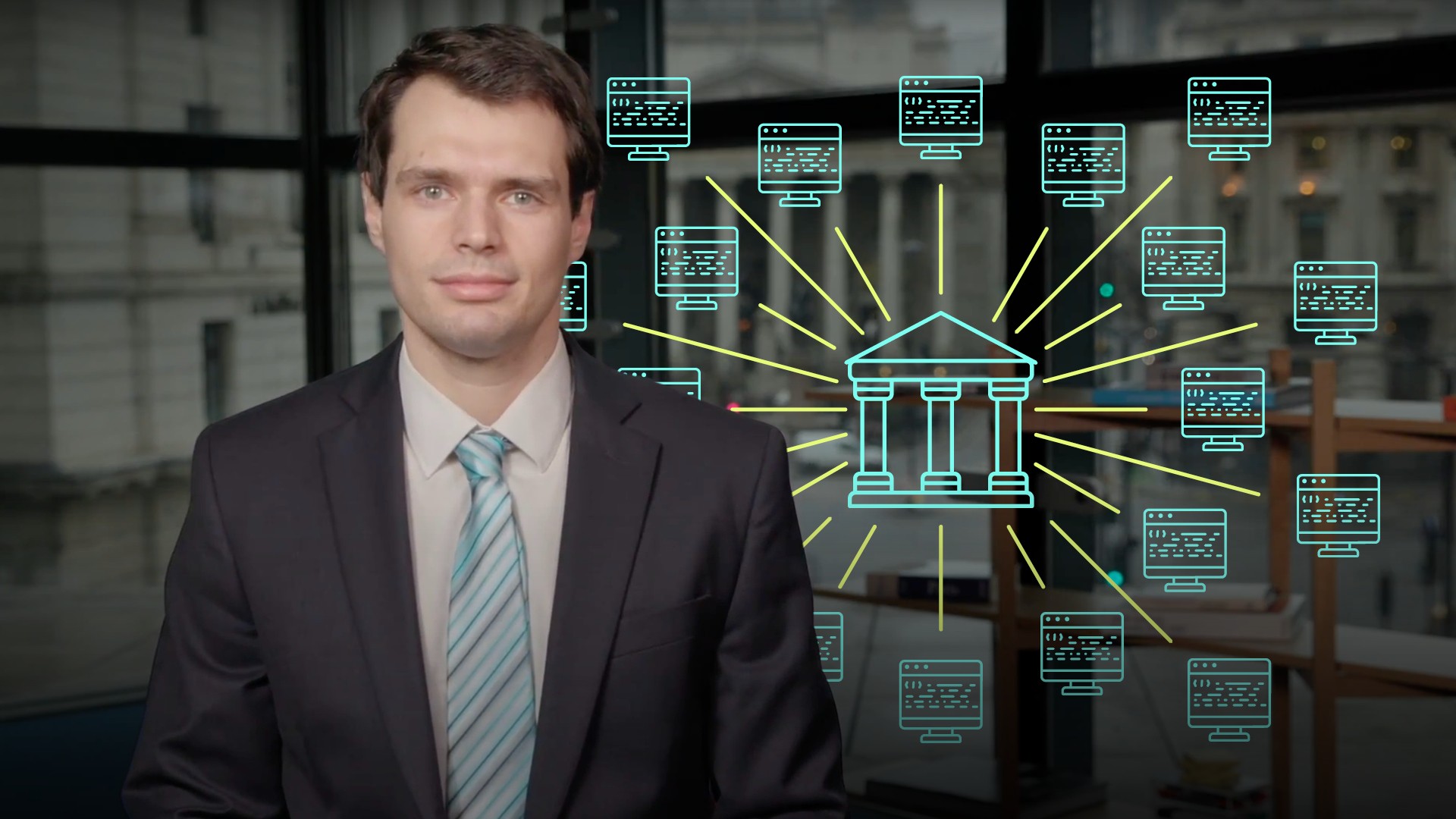
Introduction to Blockchain

Igor Pejic
Financial technology & blockchain specialist
Bankers and non-bankers alike have become familiar with the terms cryptocurrencies and distributed ledgers. In this video, Igor explains some key concepts relating to blockchain including what it is, the difference between centralised and decentralised blockchains and smart contracts.
Bankers and non-bankers alike have become familiar with the terms cryptocurrencies and distributed ledgers. In this video, Igor explains some key concepts relating to blockchain including what it is, the difference between centralised and decentralised blockchains and smart contracts.

Introduction to Blockchain
11 mins 50 secs
Following the global financial crisis of 2008, a short, mysterious paper written by Satoshi Nakamoto outlined the world’s first real cryptocurrency, Bitcoin. The underlying technology behind Bitcoin is known as blockchain: a computer protocol enabling distributed ledgers and promising almost instantaneous and near free-value transactions. Blockchain allows money and assets to be moved without a central authority; validation is performed via a peer-to-peer network without the need for intermediaries to authenticate, clear or settle transactions. The second generation of blockchain utilises smart contracts which can automatise a series of blockchain-based actions and thereby have a disruptive impact, not only on payments but on the economy as a whole.
Key learning objectives:
What are the fundamental differences between blockchain and the current payment systems?
Outline the differences between centralised and decentralised blockchains
Define ‘smart contracts’ and explain how they can be used to evolve blockchain
What are the fundamental differences between blockchain and the current payment systems?
Technologically, the blockchain’s fundamental difference to the current payments systems is its distributed nature. Blockchain uses distributed ledger technology where sets of records are not kept and updated on a centralised server but stored in a computer network that is distributed across the globe. All monetary transactions need to be recorded in something called a ledger which now takes the form of a computer file of some sort.
Blockchain is revolutionary because it works with one ledger only, meaning there is only one version of the truth which is being updated in real time as transactions are verified and then being continuously distributed to each computer in the network. Those computers and servers are called nodes, and their task is not only to keep a copy of the record, but to verify whether the new entries that are added to the existing records are legitimate.
Outline the differences between centralised and decentralised blockchains
The consensus process, which verifies new transactions, differs between the two major types of blockchain: centralised and decentralised. Some differences include:
- Accessibility
- In the decentralised blockchain set-up, everybody is free to join the network. If you join the network, you supply computing power in exchange for being rewarded with the currency of the blockchain.
- Centralised blockchains limit the autonomy of the network by deciding who the participants will be, sacrificing openness for a much faster and cheaper process.
- Scalability
- Decentralised systems have scalability issues due to high numbers of participants and furthermore, these blockchains have serious energy consumption repercussions.
The crucial difference between the two systems is that a centralised blockchain relies on at least one trusted authority causing many pundits to not accept these systems as fully-fledged blockchains.
Define ‘smart contracts’ and explain how they can be used to evolve blockchain
Smart contracts are not necessarily contracts in the legal sense, but rather computer protocols that exist alongside the blockchain. They are pieces of code written to autonomously transfer digital assets if an event was to occur.
For example, if your flight gets delayed and you are entitled to compensation, your insurer can anticipate that scenario and write a smart contract for the blockchain that immediately releases payment to your account once the airline reports the delay. There is no bureaucracy and no leeway for the airline to refuse payment.
The issue with smart contracts is ensuring the inputs from the outside world through interfaces called ‘oracles’ are correct and authentic.

Igor Pejic
There are no available videos from "Igor Pejic"

